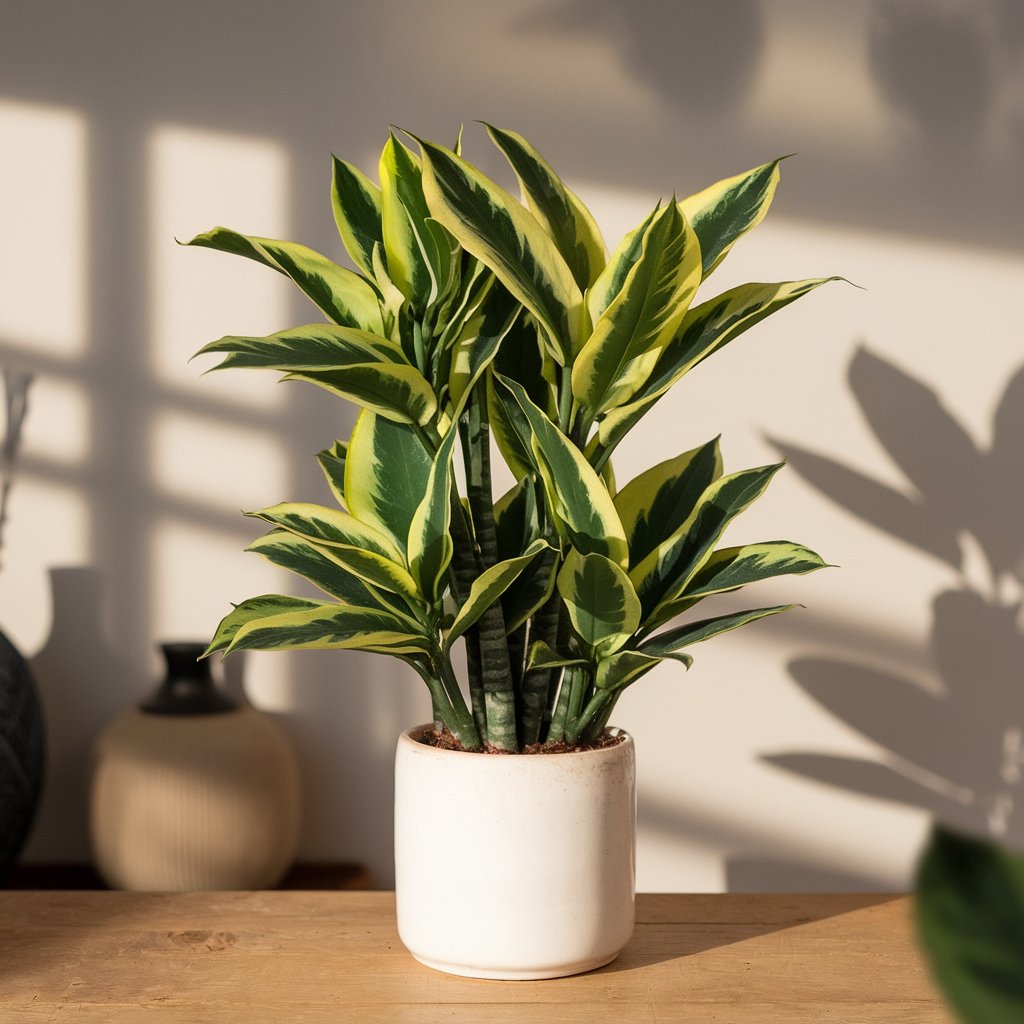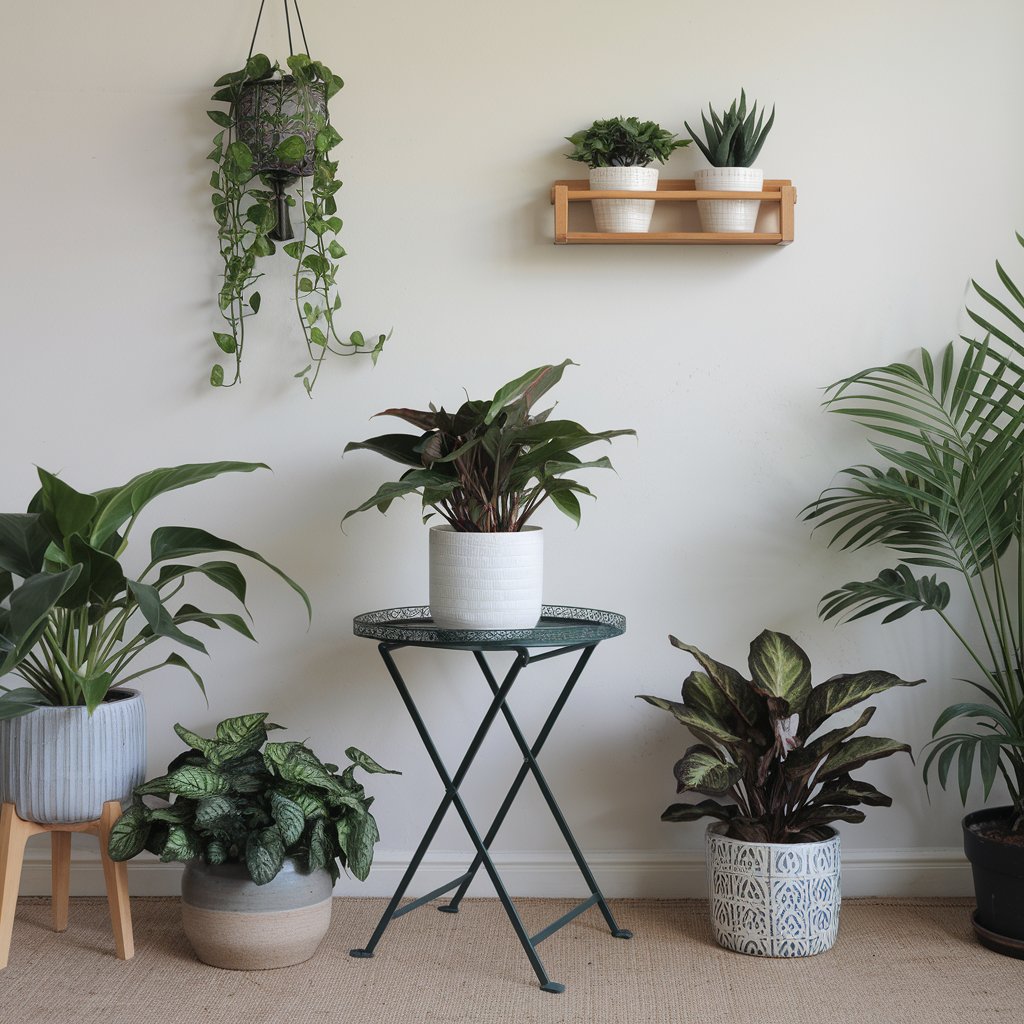Dracaena plants are popular for indoor gardening, known for their lush green leaves and striking appearance. These plants are easy to care for, making them ideal for both beginners and experienced indoor gardeners. In this guide, we’ll walk you through everything you need to know about growing and caring for dracaena indoors, including tips on lighting, watering, and common problems to watch out for.
Why Choose Dracaena as an Indoor Plant?
Dracaenas are more than just beautiful indoor plants; they offer numerous benefits that make them a wonderful addition to any home:
- Low Maintenance: Dracaenas are forgiving and adaptable, requiring minimal care.
- Air Purifying: Dracaena plants are natural air purifiers, helping to remove toxins like formaldehyde, benzene, and trichloroethylene from the air.
- Versatile Aesthetic: With a variety of shapes, sizes, and colors, dracaena can complement any interior style.
- Health Benefits: Studies suggest that indoor plants like dracaena can reduce stress and improve mood, adding a positive vibe to indoor spaces.
Types of Dracaena Plants for Indoor Growth
Several dracaena varieties are well-suited for indoor growth. Here are a few popular options:
- Dracaena marginata (Dragon Tree): Known for its thin, arching leaves with red edges, this variety is perfect for adding height and texture to a room.
- Dracaena fragrans (Corn Plant): With wide, green leaves and a bushy appearance, the corn plant variety is great for large spaces.
- Dracaena reflexa (Song of India): This variety has glossy green leaves with yellow edges, adding a bright, cheerful touch to any room.
- Dracaena compacta: As the name suggests, this compact plant is ideal for smaller spaces and tabletops, with densely packed, deep green leaves.
How to Grow Dracaena Indoors
Growing dracaena plants indoors is easy as long as you provide them with the right environment. Here’s how to set up your dracaena plant for success:
1. Choosing the Right Pot and Soil
Dracaena plants prefer well-draining soil, so choose a potting mix that includes perlite or sand to improve drainage.Using a container with drainage holes is essential to prevent root rot. Dracaenas generally thrive in a slightly acidic to neutral pH level, around 6.0 to 6.5.
2. Ideal Lighting for Dracaena
Dracaenas do best in bright, indirect light but can also adapt to lower light levels. Avoid direct sunlight, which can cause leaf burn. If your dracaena’s leaves start to fade or droop, it might be a sign that it needs more light. Placing the plant near an east- or north-facing window is usually ideal.
3. Watering Requirements
Dracaenas like their soil to be moist but not soaked. Water your plant when the top inch of soil feels dry, and always check for drainage. Overwatering can lead to root rot, one of the most common issues with dracaena. In winter, as the plant’s growth slows, decrease the watering frequency.
4. Humidity and Temperature
Dracaenas prefer moderate humidity levels, making them ideal for most indoor environments. However, if the air is particularly dry, you can mist the leaves occasionally to maintain humidity. Dracaena plants do well in temperatures between 65°F and 80°F (18°C – 27°C). Avoid placing them near drafts, heaters, or air conditioning units, as temperature fluctuations can stress the plant.
5. Fertilizing Your Dracaena
Feed your dracaena with a balanced, water-soluble fertilizer once every two months during the growing season (spring and summer). Avoid over-fertilizing, as dracaenas are light feeders and can be sensitive to high salt concentrations in fertilizers. Diluting the fertilizer to half strength is recommended.
Pruning and Repotting Dracaena Plants
Pruning is essential for maintaining a healthy dracaena plant. Remove any yellow or dead leaves at the base to encourage new growth. You can also trim back any leggy or overly tall stems to promote a fuller appearance.
Repotting your dracaena is usually only necessary every 2-3 years or when the roots become pot-bound. Choose a pot that’s slightly larger than the current one and refresh the soil for better nutrient absorption.
Common Dracaena Care Issues and Solutions
Dracaenas are generally hardy, but they can develop some issues if not properly cared for. Here’s a look at common problems and how to address them:
- Yellowing Leaves: This can result from overwatering, poor drainage, or high salt levels in the soil. Check the soil moisture and reduce watering as needed.
- Brown Tips: Often caused by dry air, inconsistent watering, or sensitivity to fluoride in tap water. If possible, use distilled or rainwater for your dracaena.
- Drooping Leaves: This may indicate underwatering or low light levels. Adjust watering and ensure the plant receives adequate indirect light.
Propagating Dracaena
Propagating dracaena is an easy and rewarding process. The best method for propagation is stem cuttings:
- Choose a Stem: Select a healthy stem, preferably one with multiple nodes (the points where leaves attach to the stem).
- Cut and Plant: Cut a 4-6 inch section of the stem, removing any leaves from the bottom half. Plant the cutting in moist soil or place it in water to root.
- Provide Proper Conditions: Place the cutting in indirect light, and keep the soil or water consistently moist. Roots should start forming within a few weeks.
Once the roots are well established, you can transplant the new plant into a pot with soil.
The Health Benefits of Having Dracaena Indoors

Aside from being a beautiful plant, dracaena offers health benefits due to its air-purifying qualities. Here are some of the advantages:
- Improved Indoor Air Quality: Dracaena plants help remove toxins from the air, such as formaldehyde, benzene, and trichloroethylene, improving overall air quality.
- Stress Reduction: Studies have shown that indoor plants like dracaena can help reduce stress and promote a sense of well-being.
- Increased Productivity: Having greenery indoors can enhance focus and productivity, making dracaena a great addition to home offices and workspaces.
Decorating with Dracaena: Styling Ideas
Dracaena plants are incredibly versatile and add an elegant touch to any room. Here are some tips for styling your dracaena indoors:
- Statement Plant: Place a tall dracaena in a large decorative pot for a bold statement in living rooms or entryways.
- Shelf Decor: Smaller dracaena varieties, like Dracaena compacta, look great on shelves or side tables, adding a touch of greenery without overwhelming the space.
- Grouping Plants: Combine different dracaena varieties in a plant cluster to create a lush, layered effect.
Final Thoughts on Growing Dracaena Indoors
Dracaena plants are an excellent choice for indoor gardeners looking for a low-maintenance, attractive plant with air-purifying qualities. With proper care, dracaena will thrive indoors and add a touch of natural beauty to your home. Whether you’re a beginner or an experienced gardener, dracaena’s resilience and elegance make it a plant worth adding to your collection. Enjoy the benefits of this gorgeous plant, and embrace the relaxing, green oasis it creates in your space.




